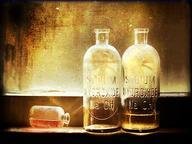Quiz Answer Key and Fun Facts
1. Baking soda is commercially manufactured on a large scale by the ammonia-soda Solvay process, named after Ernest Solvay, a Belgian industrial chemist. Which substances are the two main inputs (raw materials) in this process?
2. What is the appearance of baking soda at STP (Standard Temperature and Pressure)?
3. Which gas is evolved when baking soda is added to a moderately strong acid?
4. The first aerated drinks were prepared by adding baking soda to lemonade (the juice of lemons + water + sugar). Which component of lemon-juice would the baking soda react with to produce the "fizz"?
5. Is baking soda acidic, basic or neutral in nature?
6. A baker once forgot to add baking powder (which contains baking soda) to a cake he was baking. How would his cake turn out?
7. Mr. Natrium wanted to bake a cake for his wife (who was a professor of chemistry) on the occasion of their 11th wedding anniversary. Realising that the ingredient "baking powder" was required for his recipe, he looked around the house for it, but to no avail. Browsing through the shelves of his wife's mini-laboratory, he found a near-empty bottle labelled "Baking Soda", and emptied its contents into the cake-mixture. What would his cake be like?
8. In the form of which mineral does sodium bicarbonate occur naturally? (A hint: its name is derived from the chemical formula of baking soda- NaHCO3.)
9. One type of fire-extinguisher is the "soda acid" type, which contains a solution of sodium bicarbonate and a flask of sulphuric acid. When the flask is broken, acid reacts with sodium bicarbonate to produce a stream of frothy water. Which gas is contained in this water?
10. For which of the following ailments might a doctor prescribe sodium bicarbonate pills?
Source: Author
achernar
This quiz was reviewed by FunTrivia editor
crisw before going online.
Any errors found in FunTrivia content are routinely corrected through our feedback system.
